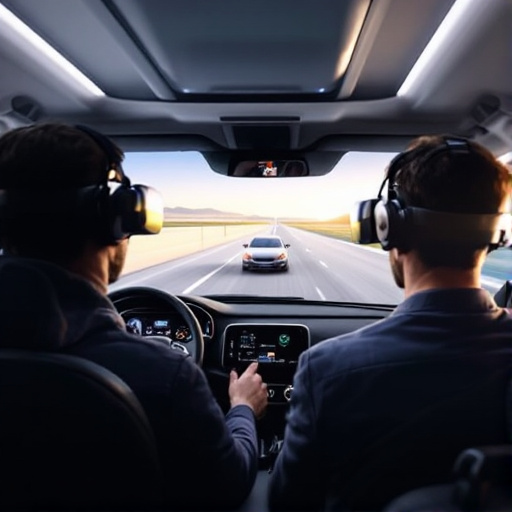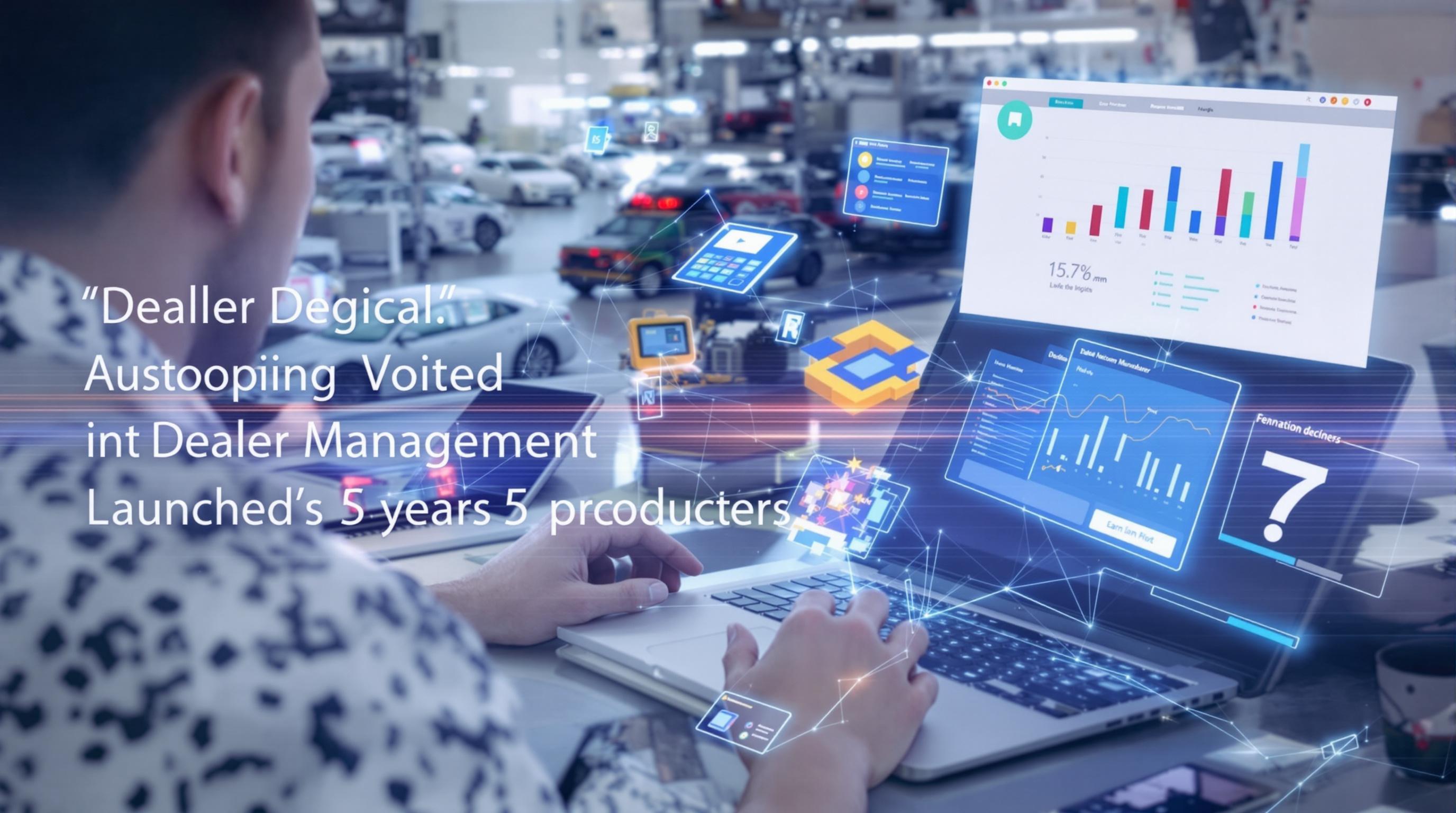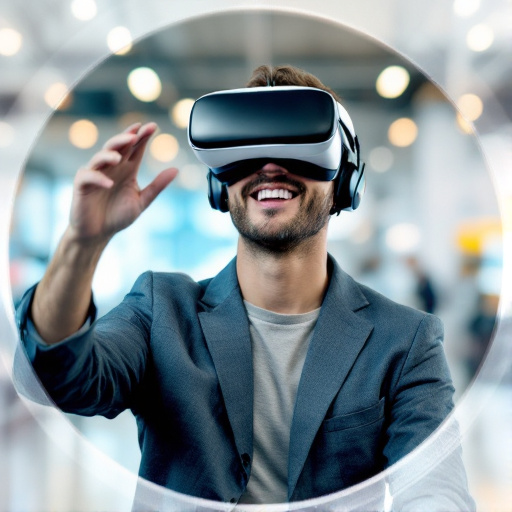Related Articles
- Unveiling the Unthinkable: How Your Social Media Posts Could Impact Your Car Insurance Premiums
- "From Showroom to Social Media: How Dealerships are Becoming Digital Storytellers in 2023"
- "From Showroom to Stream: The Rise of Virtual Reality Test Drives at Dealerships"
- Revving Up Sales: How Virtual Reality is Transforming the Dealership Experience for Shoppers and Sellers Alike
- Selling Experiences: How Dealerships Can Transform into Immersive Automotive Entertainment Hubs
- The Surprising Impact of Your Credit Card Habits on Car Financing: What You Didn't Know!
"From Showroom to Stream: The Rise of Virtual Reality Test Drives at Dealerships"
"From Showroom to Stream: The Rise of Virtual Reality Test Drives at Dealerships"
The automotive industry is undergoing a transformation with the emergence of virtual reality (VR) test drives, effectively bridging the gap between traditional showrooms and the digital landscape. This article delves into the rise of VR test drives at dealerships, exploring case studies, statistics, and the implications of this immersive technology for car buyers and dealerships alike.
Introduction: The New Era of Car Buying
Picture this: you stroll into a car dealership, greeted by a friendly salesperson eager to guide you through the latest models. While this scenario has been the cornerstone of car buying for decades, the experience is rapidly evolving. The advent of technology has introduced a new player in the automotive arena: virtual reality. What was once confined to the realm of gaming and entertainment is now transforming the way we test drive and buy cars.
What is Virtual Reality Test Driving?
Virtual reality test driving allows potential buyers to experience a car's features and performance without ever leaving the dealership or their homes. Using VR headsets, users can simulate a drive in different models, experiencing everything from the car's handling to its infotainment system. It’s like sitting in the driver's seat while still in your PJs—a game-changer for those who dread traditional test drives!
How It Works: Behind the Scenes
The magic of VR test drives lies in advanced 3D modeling and high-definition imagery combined with sophisticated software that simulates driving environments. Companies have to invest in rich databases filled with accurate car data and detailed environments, allowing users to virtually navigate bustling city streets, scenic highways, and even off-road terrains.
Why Should Dealerships Invest in VR Technology?
For car dealerships, the investment in VR test drives isn’t just a trendy gimmick; it’s a strategic move backed by statistics. According to a study by the National Automobile Dealers Association, dealerships utilizing virtual reality programs saw a 30% increase in customer engagement and a significant boost in sales conversions. Why? Because reducing the friction associated with traditional test drives directly correlates with increased consumer interest.
Benefits of Virtual Reality Test Drives
Let’s break down some compelling advantages for both buyers and sellers:
1. Enhanced Customer Experience
Imagine being a 22-year-old college grad in search of your first car. Instead of feeling pressured by sales tactics, you can explore various models at your own pace and comfort level through a VR headset. This enhances the overall customer journey and keeps buyers coming back for more.
2. Expanding Inventory Reach
Dealerships often have limited physical inventory. VR technology expands that inventory to limitless possibilities. Buyers can explore a wide range of models, colors, and configurations, meaning they aren’t just limited to what’s in the showroom that day. A report from Automotive News highlights dealerships experiencing a 50% increase in customer options with print-ready VR platforms.
3. Accessibility for All Ages
While VR may seem appealing to younger folks, it has universal accessibility. Older generations, often skeptical of too much technology, are finding virtual reality more intuitively engaging than traditional browsing. In fact, a consumer survey revealed that 42% of respondents aged 60 and up preferred VR over other forms of exploration.
Case Studies: Success Stories from the Field
Dealerships around the world have embraced VR with varying degrees of success. One standout example is Tesla. Tesla has leveraged VR test drives to attract customers to their showrooms, resulting in increased customer fascination and even sales, particularly among tech-savvy millennials.
Meanwhile, in a small town in Michigan, Johnson Auto Sales implemented a VR program and reported a 20% increase in foot traffic. Their strategy included VR booths in the dealership that encouraged spontaneous test drives while waiting on paperwork, keeping potential buyers engaged and entertained.
The Impact of Millennials and Gen Z
It’s no secret that younger generations are changing the car-buying landscape. Millennials are leading the charge for digital experiences, with 56% preferring online research and 34% willing to make purchases via mobile apps, according to a J.D. Power study. However, they also seek tangible experiences — that’s where VR comes in. It allows these tech-savvy buyers to experience the excitement of a new car while maintaining the convenience and control they desire.
Bridging the Gap: Traditional vs. Virtual
For decades, the process of test-driving a car demanded time and physical presence. VR test drives eliminate geographical limitations. Now, prospective buyers can effortlessly ‘shop’ for their vehicles in a virtual environment from the comfort of their living room. This innovation may very well represent the future of automotive sales.
Environmental Benefits
Let’s not forget the environmental aspect! According to a study published in the Environmental Impact Review, virtual test drives can lead to lower carbon footprints by reducing test-drive trips to dealerships. If 25% of buyers opted for VR experiences instead of physical test drives, it could save approximately 5 million gallons of gas annually. How’s that for a green initiative?
Challenges on the Road Ahead
As with any innovation, challenges lie ahead. The initial investment in VR technology can be steep. Not all dealerships have the budget or resources to implement sophisticated VR systems. Moreover, training staff members to use VR effectively and guiding customers through the experience presents its own hurdles.
Solving the Tech Challenge
To tackle the learning curve, many dealerships have started training programs for their staff, ensuring team members can not only use the technology but also help customers navigate their virtual experience comfortably. Additionally, companies such as Oculus and HTC are developing more user-friendly devices tailored explicitly for the automotive sector.
The Future of Virtual Reality in Automotive Sales
As we look to the future, it’s clear that the rise of VR test drives showcases a broader trend towards immersive technology within retail. With the integration of artificial intelligence, machine learning, and augmented reality, the possibilities are endless. Some experts predict that within the next five years, up to 55% of auto dealerships will have fully interactive VR platforms.
Consumer Desire for Innovation
Interestingly, a study conducted by KPMG revealed that 80% of surveyed consumers are interested in experiencing emerging technologies during their car-buying journey. As expectations shift, dealerships must adapt to remain competitive. VR isn't just a luxurious perk anymore—it's becoming a core component of a customer's buying journey.
The Humorous Side of VR Test Drives
And let’s be honest, who wouldn’t want the chance to drive a supercar on the Monaco Grand Prix without ever leaving their neighborhood? Picture this: You're zooming past the extravagance of Monte Carlo while sipping a latte at home. If that’s not motivation enough to give VR a shot, I don’t know what is!
Conclusion: A Paradigm Shift in Car Buying
In conclusion, the rise of virtual reality test drives is revolutionizing the automotive retail landscape. By offering immersive experiences that enhance customer engagement, expand inventory reach, and contribute positively to the environment, VR is why the 21st-century car buyer will never look back. So, whether you’re a seasoned car enthusiast or a teenager excited about your first set of wheels, VR test drives may soon become an exhilarating norm.
Final Thoughts
As we embrace this wave of innovation, the automotive industry stands on the brink of a significant paradigm shift. Armed with the right tools and mindset, dealerships can enhance customer experiences and redefine how cars are sold. Adapting now ensures they stay relevant in a market hungry for technological advancements—and who knows? The next time you drive a luxury sedan, it might just be in virtual form!




